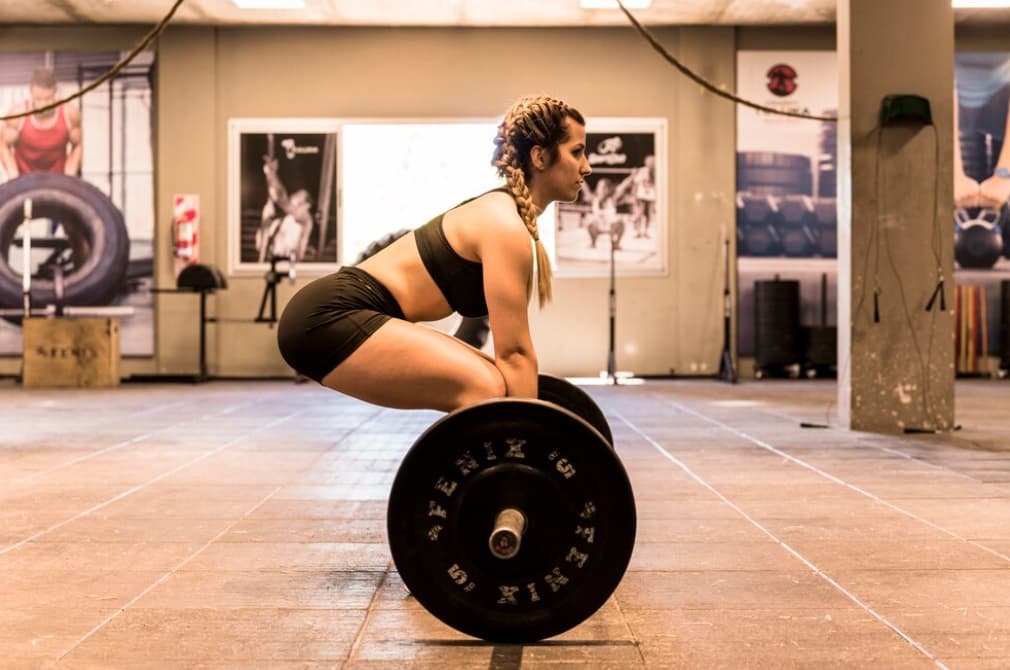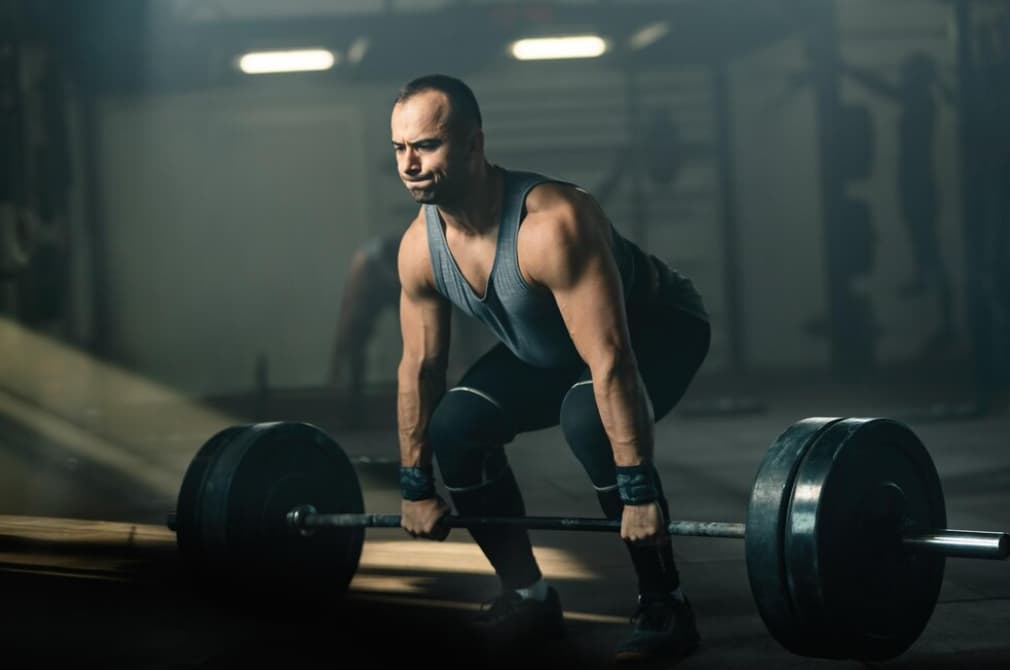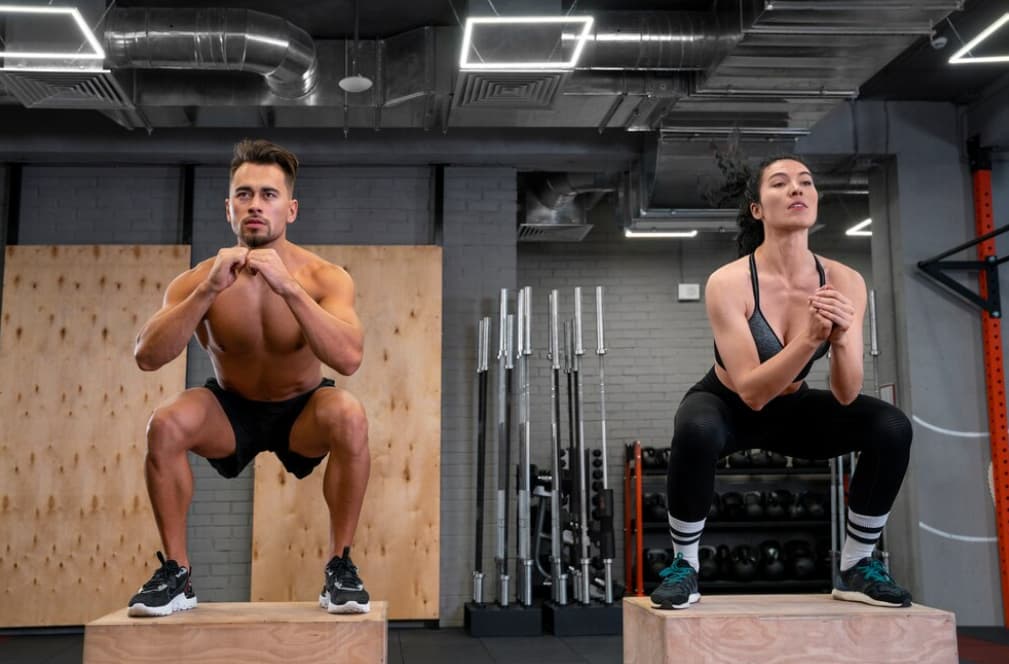Attention, fellow gym enthusiasts! It’s no secret that deadlifts reign supreme at the gym, but the burning question is, how many sets should you include in your workout routine? Well, fasten your lifting belts, because we’re about to delve into the world of deadlifts.
Within this article, we’ll uncover the ideal number of sets tailored to your fitness goals, whether you aspire to become a powerlifting champion or simply want to rock those stylish new jeans. So, get ready for an enlightening journey as we unveil the mystery surrounding deadlifts. And always remember, the only regrettable workout is the one you didn’t embark on. You may also like to explore the considerations for working out after donating plasma in our related article.
Fun Fact: Did you know that the current world record for the heaviest deadlift stands at a staggering 501 kilograms (1104.5 pounds)? That’s akin to hoisting a small car! But fear not, our goals are a tad more attainable (for now).
The Benefits of Deadlifts for Fitness Enthusiasts
Deadlifts engage a variety of muscle groups, targeting the back, glutes, hamstrings, and core. They are a powerhouse exercise for enhancing strength, building muscle mass, and even catching the eye of someone special at the gym.
However, it’s crucial to approach deadlifts with a strategy. Determining the right number of sets is essential. If you do too few, the impact is minimal – similar to lifting everyday groceries. On the other hand, overdoing it can leave you sore and stiff, akin to a week-long penguin walk. Deadlifts aren’t just for the bodybuilding elite. They play a pivotal role in overall fitness, aiding in posture improvement and reducing injury risks. And that’s a benefit everyone can appreciate.
| Aspect | Details |
|---|---|
| Muscle Groups | Back, Glutes, Hamstrings, Core |
| Training Goals | Strength, Muscle Development, Overall Fitness |
| Set Range | Varies (To be determined during the workout) |
The Right Amount of Deadlift Sets for Your Goals

Deciding on the number of deadlift sets to include in your workout is a nuanced decision, much like choosing the perfect ingredients for your favorite smoothie. Let’s delve into the factors that influence this choice:
Diverse Workout Goals and Repetition Ranges
Powerlifting Focus: Aiming for Herculean strength? Your routine might lean towards fewer repetitions but more sets. Consider something like 5 sets of 3 repetitions. This approach is due to the high intensity of lifting heavy weights, ensuring your muscles don’t tire prematurely.
- Bodybuilding Aspirations: To sculpt and enhance muscle definition, you may want to aim for 3 to 4 sets of 8 to 12 reps;
- General Health and Fitness: For overall wellness and fitness, a balanced approach of 3 sets of 6 to 10 reps could be ideal. It’s a well-rounded regimen that isn’t overly strenuous.
Frequency of Deadlifts Throughout the Week
- Beginners: Just starting? A frequency of twice a week is generally recommended;
- Intermediate to Advanced Lifters: You might elevate this to three times a week. However, it’s crucial to be attuned to your body’s signals. If you’re feeling overly strained, it’s wise to take a rest.
Emphasis on Proper Technique
The significance of maintaining correct form cannot be overstated. Incorrect technique is not only evident but can also lead to long-term issues that are challenging to correct. Ensure your back is straight and your core muscles are engaged to avoid injuries.
- Strategies for Handling Multiple Sets: If you’re feeling worn out, don’t hesitate to pause between sets or even repetitions. Your muscles require these brief rest periods to recover;
- Expert Tip: Utilize a mirror or work with a gym partner to monitor your form. It’s akin to having a trusted friend who gives you honest feedback on your attire – they’ll let you know when adjustments are needed.
| Tip | Details |
|---|---|
| Watch Your Back | Keep it straight; avoid slouching! |
| Engage the Core | Your core isn’t just for show; put it to work! |
| Tighten Your Triceps | Prevent biceps engagement to avoid tearing them. |
| Rest Between Sets/Reps | Take a breather; your muscles will appreciate it. |
The number of deadlift sets you should do varies based on your personal fitness goals and physical condition. It’s a subjective decision, similar to picking the right tunes for your gym session. Find your ideal routine and enjoy your workouts!
Workout with Deadlift Variations
To diversify your training and challenge your muscles in new ways, incorporating various deadlift variations into your routine can be highly effective. These alternatives not only engage the same muscle groups differently but also add more depth to your workout, potentially increasing the number of effective sets you can perform. It’s important to note that the first variation you introduce in a session will likely have the most significant impact on your workout.
Let’s delve into some key deadlift variations that can enrich your training repertoire and contribute to your strength development:
Classic Deadlift
- Technique: The quintessential move. Stand with feet shoulder-width apart, grasp the bar, maintain a straight back, and lift;
- Benefits: It’s a foundational exercise for building overall strength, akin to the basic yet ever-appealing vanilla flavor in the world of deadlifts.
Sumo Deadlift
- Technique: Adopt a wider stance with toes pointed outward, resembling a sumo wrestler’s position, then lift the weight;
- Advantages: This variation emphasizes the glutes and inner thighs, adding a unique dimension to your strength training.
Romanian Deadlift (RDL)
- Technique: With straight legs, hinge at the hips and lower down as if reaching for something without bending your knees;
- Impact: Excellent for developing hamstrings and glutes, the RDL is akin to a stretching exercise, focusing on muscle elongation and flexibility.
Seated Cable Deadlift
- Technique: Seated, pull on a cable with a hip hinge movement, allowing for forward lean and then returning to the start position;
- Advantages: This less conventional variant is gentler on the back and ideal for higher reps at a lower weight, offering a novel approach to deadlifting.

Jefferson Curl
- Technique: Gradually curl your spine downwards, starting with no weight and increasing gradually over time;
- Benefits: This exercise enhances both flexibility and strength, providing an unexpected twist in your deadlift routine.
Rack Pulls
- Technique: Lift the barbell from a rack set around knee height, focusing on the upper range of the deadlift movement;
- Role: Particularly useful for overcoming strength plateaus and enhancing back strength, akin to a supportive tool in your strength training arsenal.
Incorporating these deadlift variations into your gym routine can refresh your workouts and may lead you to discover a new favorite exercise. Remember, in fitness as in life, variety keeps things interesting and challenging!
FAQ
If you’re just starting out with deadlifts, it’s wise to begin with 2 to 3 sets, consisting of 8 to 10 repetitions each. This range is a solid foundation for building up both strength and technique without overwhelming your body.
Deadlifting every day might seem like a good idea for fast gains, but in reality, it’s not advisable. Your muscles require time to recover and grow stronger. Hence, it’s best to space out your deadlifting sessions, aiming for 2 to 3 times a week. This approach allows adequate recovery while still maintaining consistent progress.
Experiencing pain during a deadlift is a significant warning sign that should not be ignored. It’s crucial to stop immediately if you feel any discomfort. Consult a fitness professional or a medical expert to ensure that you’re not risking injury. Safety should always be your first priority.
Increasing the number of sets in your deadlifting routine should be a gradual process. Start by adding one more set when you feel that your current workload has become manageable. This approach is akin to progressively adding weights to the barbell – it should be done thoughtfully and at a pace that feels challenging yet achievable. The goal is to progress steadily without causing undue strain or injury.
Increasing the number of sets in your deadlifting routine should be a gradual process. Start by adding one more set when you feel that your current workload has become manageable. This approach is akin to progressively adding weights to the barbell – it should be done thoughtfully and at a pace that feels challenging yet achievable. The goal is to progress steadily without causing undue strain or injury.
Absolutely, incorporating various deadlift variations in a single workout can be highly beneficial. It allows you to work different muscle groups and prevents monotony in your training. However, it’s important to be mindful of the overall volume and intensity of your workout to avoid overtraining.
Proper form is essential in deadlifting to prevent injuries and maximize effectiveness. To ensure you’re doing it right, you can use a mirror to self-assess, ask a gym buddy to watch and give feedback, or record a video of yourself for a more detailed analysis. Maintaining a neutral spine, engaging your core, and keeping the bar close to your body are key aspects of proper deadlift form.
A proper warm-up is crucial for effective and safe deadlifting. Start with light cardiovascular exercises to increase your heart rate. Then, engage in dynamic stretching or bodyweight exercises like lunges or air squats. Specific movements like light-weight pull-ups or rows can also activate the muscles used in deadlifting, preparing your body for the load to come.
Yes, straps or a mixed grip can be used, especially as you start lifting heavier weights. Straps help in maintaining grip over longer sessions or with heavier weights. A mixed grip (one palm facing you and the other facing away) can also aid in grip strength. However, if using a mixed grip, it’s important to alternate which hand is facing forward and which is facing back to avoid muscle imbalances.
Hitting a plateau in deadlifting is common, but there are several strategies to overcome it. You can try altering your training routine by incorporating different deadlift variations, adjusting the number of sets and repetitions, or changing the weight. Additionally, consulting with a trainer can provide personalized advice and insights. Sometimes, a small tweak in technique or programming is all it takes to break through a plateau.
Conclusion
And there you have it, everyone! We’ve delved into the world of deadlifts, exploring everything from the classic regular deadlift to the stylish sumo variation. We’ve covered the essentials for beginners, tips to overcome plateaus, and guidance on structuring your workout. Deadlifts go beyond merely lifting a bar off the ground; they are about building strength, confidence, and character. Whether your goal is powerlifting greatness or simply staying in shape, the right number of sets, proper form, and a touch of variety can truly make a difference.
So, why wait any longer? Seize that barbell, determine your ideal set count, and lift with determination. And don’t hesitate to incorporate a few different deadlift variations into your routine; after all, life is too short for mundane workouts.
